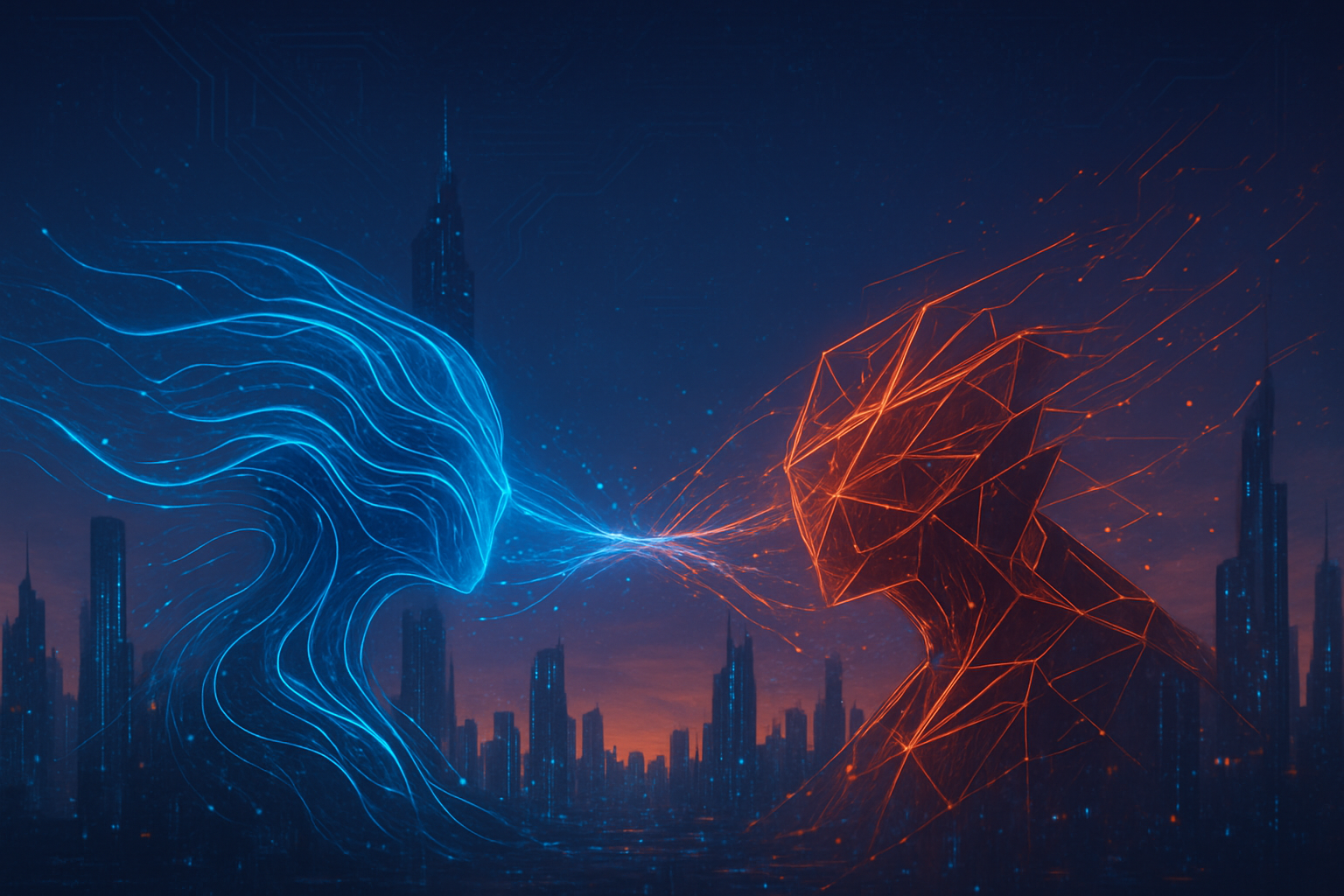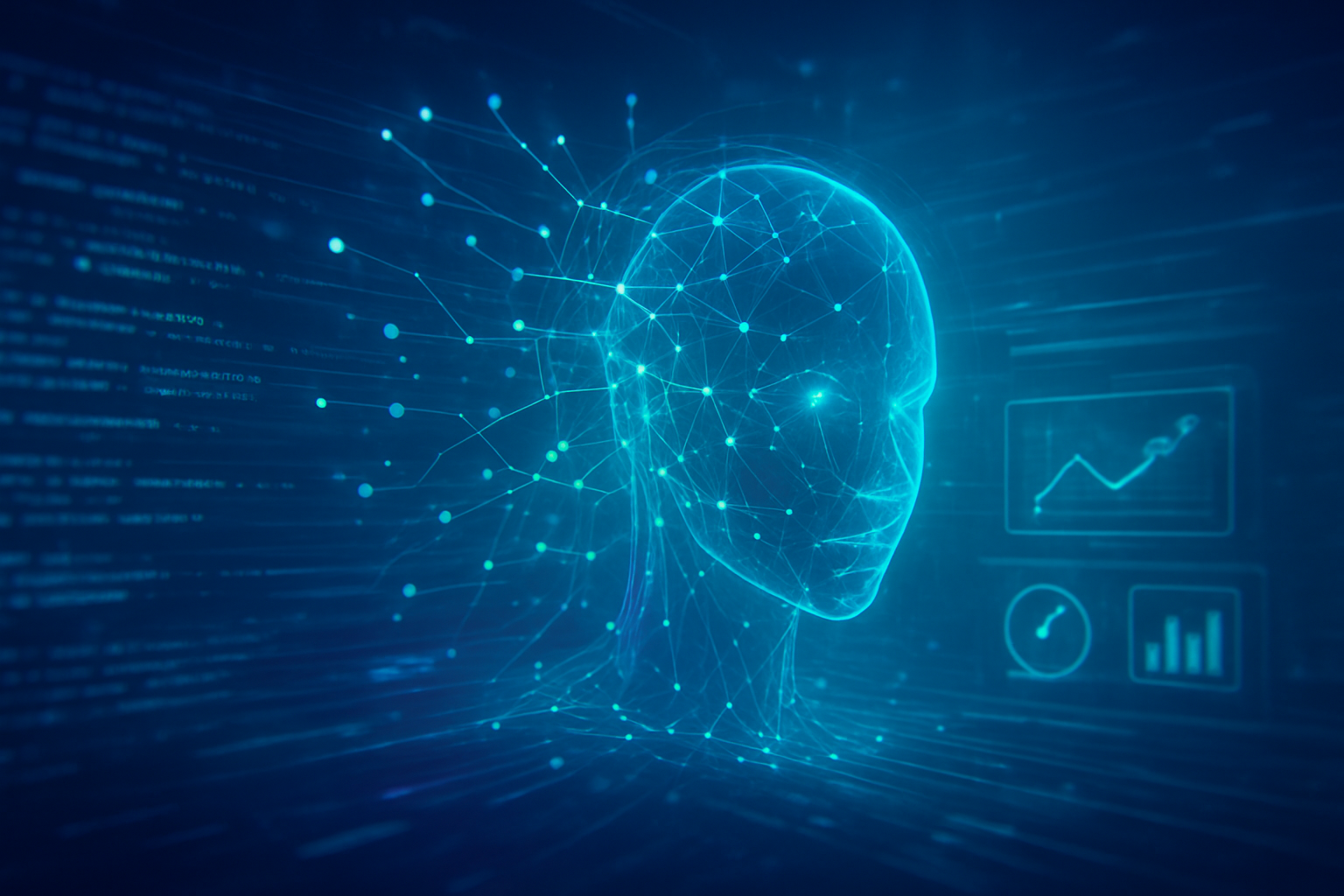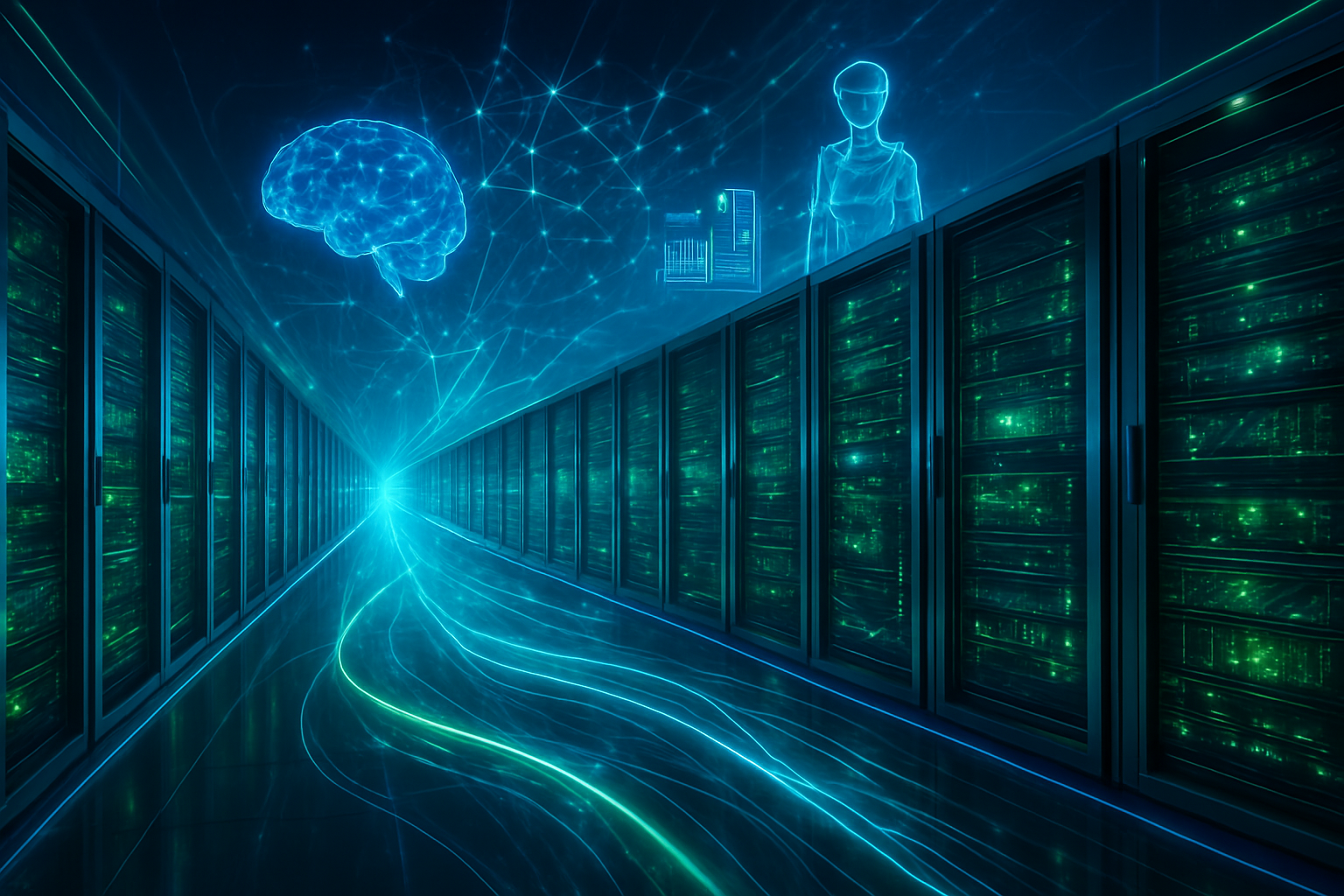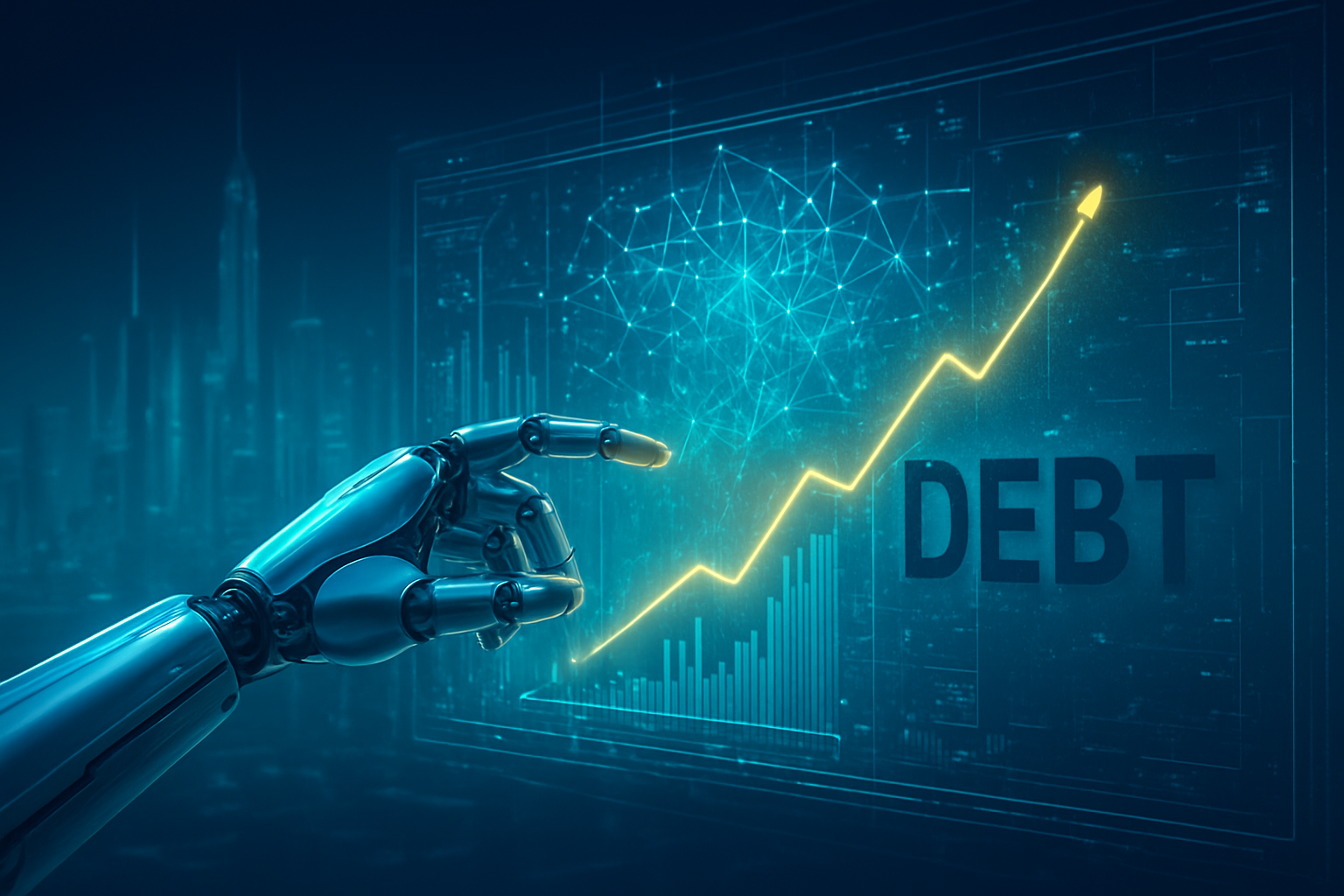The digital backbone of modern society is under constant siege, a reality starkly illuminated by recent events such as Baker University's prolonged systems outage. As Artificial Intelligence (AI) permeates every facet of technology infrastructure, from critical national services to educational institutions, the demands for robust cybersecurity and unyielding system resilience have never been more urgent. This era, marked by an escalating AI cyber arms race, compels organizations to move beyond reactive defenses towards proactive, AI-powered strategies, lest they face catastrophic operational paralysis, data corruption, and erosion of trust.
The Baker University Outage: A Clarion Call for Modern Defenses
Baker University experienced a significant and protracted systems outage, commencing on December 24, 2024, following the detection of "suspicious activity" across its network. This incident triggered an immediate and complete shutdown of essential university systems, including the student portal, email services, campus Wi-Fi, and the learning management system. The widespread disruption crippled operations for months, denying students, faculty, and staff access to critical services like grades, transcripts, and registration until August 2025.
A significant portion of student data was corrupted during the event. Compounding the crisis, the university's reliance on an outdated student information system, which was no longer supported by its vendor, severely hampered recovery efforts. This necessitated a complete rebuild of the system from scratch and a migration to a new, cloud-based platform, involving extensive data reconstruction by specialized architects. While the precise nature of the "suspicious activity" remained undisclosed, the widespread impact points to a sophisticated cyber incident, likely a ransomware attack or a major data breach. This protracted disruption underscored the severe consequences of inadequate cybersecurity, the perils of neglecting system resilience, and the critical need to modernize legacy infrastructure. The incident also highlighted broader vulnerabilities, as Baker College (a distinct institution) was previously affected by a supply chain breach in July 2023, stemming from a vulnerability in the MOVEit Transfer tool used by the National Student Clearinghouse, indicating systemic risks across interconnected digital ecosystems.
AI's Dual Role: Fortifying and Challenging Digital Defenses
Modern cybersecurity and system resilience are undergoing a profound transformation, fundamentally reshaped by artificial intelligence. As of December 2025, AI is not merely an enhancement but a foundational shift, moving beyond traditional reactive approaches to proactive, predictive, and autonomous defense mechanisms. This evolution is characterized by advanced technical capabilities and significant departures from previous methods, though it is met with a complex reception from the AI research community and industry experts, who recognize both its immense potential and inherent risks.
AI introduces unparalleled speed and adaptability to cybersecurity, enabling systems to process vast amounts of data, detect anomalies in real-time, and respond with a velocity unachievable by human-only teams. Key advancements include enhanced threat detection and behavioral analytics, where AI systems, particularly those leveraging User and Entity Behavior Analytics (UEBA), continuously monitor network traffic, user activity, and system logs to identify unusual patterns indicative of a breach. Machine learning models continuously refine their understanding of "normal" behavior, improving detection accuracy and reducing false positives. Adaptive security systems, powered by AI, are designed to adjust in real-time to evolving threat landscapes, identifying new attack patterns and continuously learning from new data, thereby shifting cybersecurity from a reactive posture to a predictive one. Automated Incident Response (AIR) and orchestration accelerate remediation by triggering automated actions such as isolating affected machines or blocking suspicious traffic without human intervention. Furthermore, "agentic security," an emerging paradigm, involves AI agents that can understand complex security data, reason effectively, and act autonomously to identify and respond to threats, performing multi-step tasks independently. Leading platforms like Darktrace ActiveAI Security Platform (LON: DARK), CrowdStrike Falcon (NASDAQ: CRWD), and Microsoft Security Copilot (NASDAQ: MSFT) are at the forefront of integrating AI for comprehensive security.
AI also significantly bolsters system resilience by enabling faster recovery, proactive risk mitigation, and autonomous adaptation to disruptions. Autonomous AI agents monitor systems, trigger automated responses, and can even collaborate across platforms, executing operations in a fraction of the time human operators would require, preventing outages and accelerating recovery. AI-powered observability platforms leverage machine data to understand system states, identify vulnerabilities, and predict potential issues before they escalate. The concept of self-healing security systems, which use AI, automation, and analytics to detect, defend, and recover automatically, dramatically reduces downtime by autonomously restoring compromised files or systems from backups. This differs fundamentally from previous, static, rule-based defenses that are easily evaded by dynamic, sophisticated threats. The old cybersecurity model, assuming distinct, controllable domains, is dissolved by AI, creating attack surfaces everywhere, making traditional, layered vendor ecosystems insufficient. The AI research community views this as a critical "AI Paradox," where AI is both the most powerful tool for strengthening resilience and a potent source of systemic fragility, as malicious actors also leverage AI for sophisticated attacks like convincing phishing campaigns and autonomous malware.
Reshaping the Tech Landscape: Implications for Companies
The advancements in AI-powered cybersecurity and system resilience are profoundly reshaping the technology landscape, creating both unprecedented opportunities and significant challenges for AI companies, tech giants, and startups alike. This dual impact is driving an escalating "technological arms race" between attackers and defenders, compelling companies to adapt their strategies and market positioning.
Companies specializing in AI-powered cybersecurity solutions are experiencing significant growth. The AI cybersecurity market is projected to reach $134 billion by 2030, with a compound annual growth rate (CAGR) of 22.3% from 2023 to 2033. Firms like Fortinet (NASDAQ: FTNT), Check Point Software Technologies (NASDAQ: CHKP), Sophos, IBM (NYSE: IBM), and Darktrace (LON: DARK) are continuously introducing new AI-enhanced solutions. A vibrant ecosystem of startups is also emerging, focusing on niche areas like cloud security, automated threat detection, data privacy for AI users, and identifying risks in operational technology environments, often supported by initiatives like Google's (NASDAQ: GOOGL) Growth Academy: AI for Cybersecurity. Enterprises that proactively invest in AI-driven defenses, embrace a "Zero Trust" approach, and integrate AI into their security architectures stand to gain a significant competitive edge by moving from remediation to prevention.
Major AI labs and tech companies face intensifying competitive pressures. There's an escalating arms race between threat actors using AI and defenders employing AI-driven systems, necessitating continuous innovation and substantial investment in AI security. Tech giants like Amazon (NASDAQ: AMZN), Microsoft (NASDAQ: MSFT), and Google (NASDAQ: GOOGL) are making substantial investments in AI infrastructure, including custom AI chip development, to strengthen their cloud computing dominance and lower AI training costs. This vertical integration provides a strategic advantage. The dynamic and self-propagating nature of AI threats demands that established cybersecurity vendors move beyond retrofitting AI features onto legacy architectures, shifting towards AI-native defense that accounts for both human users and autonomous systems. Traditional rule-based security tools risk becoming obsolete, unable to keep pace with AI-powered attacks. Automation of security functions by AI agents is expected to disrupt existing developer tools, cybersecurity solutions, DevOps, and IT operations management, forcing organizations to rethink their core systems to fit an AI-driven world. Companies that position themselves with proactive, AI-enhanced defense mechanisms capable of real-time threat detection, predictive security analytics, and autonomous incident response will gain a significant advantage, while those that fail to adapt risk becoming victims in an increasingly complex and rapidly changing cyber environment.
The Wider Significance: AI, Trust, and the Digital Future
The advancements in AI-powered cybersecurity and system resilience hold profound wider significance, deeply intertwining with the broader AI landscape, societal impacts, and critical concerns. This era, marked by the dual-use nature of AI, represents a pivotal moment in the evolution of digital trust and security.
This development fits into a broader AI landscape dominated by Large Language Models (LLMs), which are now pervasive in various applications, including threat analysis and automated triage. Their ability to understand and generate natural language allows them to parse logs like narratives, correlate alerts like analysts, and summarize incidents with human-level fluency. The trend is shifting towards highly specialized AI models tailored for specific business needs, moving away from "one-size-fits-all" solutions. There's also a growing push for Explainable AI (XAI) in cybersecurity to foster trust and transparency in AI's decision-making processes, crucial for human-AI collaboration in critical industrial processes. Agentic AI architectures, fine-tuned on cyber threat data, are emerging as autonomous analysts, adapting and correlating threat intelligence beyond public feeds. This aligns with the rise of multi-agent systems, where groups of autonomous AI agents collaborate on complex tasks, offering new opportunities for cyber defense in areas like incident response and vulnerability discovery. Furthermore, new AI governance platforms are emerging, driven by regulations like the EU's AI Act (kicking in February 2025) and new US frameworks, compelling enterprises to exert more control over AI implementations to ensure trust, transparency, and ethics.
The societal impacts are far-reaching. AI significantly enhances the protection of critical infrastructure, personal data, and national security, crucial as cyberattacks on these sectors have increased. Economically, AI in cybersecurity is driving market growth, creating new industries and roles, while also realizing cost savings through automation and reduced breach response times. However, the "insatiable appetite for data" by AI systems raises significant privacy concerns, requiring clear boundaries between necessary surveillance for security and potential privacy violations. The question of who controls AI-collected data and how it's used is paramount. Cyber instability, amplified by AI, can erode public trust in digital systems, governments, and businesses, potentially leading to economic and social chaos.
Despite its benefits, AI introduces several critical concerns. The "AI Paradox" means malicious actors leverage AI to create more sophisticated, automated, and evasive attacks, including AI-powered malware, ultra-realistic phishing, deepfakes for social engineering, and automated hacking attempts, leading to an "AI arms race." Adversarial AI allows attackers to manipulate AI models through data poisoning or adversarial examples, weakening the trustworthiness of AI systems. The "black box" problem, where the opacity of complex AI models makes their decisions difficult to understand, challenges trust and accountability, though XAI is being developed to address this. Ethical considerations surrounding autonomous systems, balancing surveillance with privacy, data misuse, and accountability for AI actions, remain critical challenges. New attack surfaces, such as prompt injection attacks against LLMs and AI worms, are emerging, alongside heightened supply chain risks for LLMs. This period represents a significant leap compared to previous AI milestones, moving from rule-based systems and first-generation machine learning to deep learning, LLMs, and agentic AI, which can understand context and intent, offering unprecedented capabilities for both defense and attack.
The Horizon: Future Developments and Enduring Challenges
The future of AI-powered cybersecurity and system resilience promises a dynamic landscape of continuous innovation, but also persistent and evolving threats. Experts predict a transformative period characterized by an escalating "AI cyber arms race" between defenders and attackers, demanding constant adaptation and foresight.
In the near term (2025-2026), we can expect the increasing innovation and adoption of AI agents and multi-agent systems, which will introduce both new attack vectors and advanced defensive capabilities. The cybercrime market is predicted to expand as attackers integrate more AI tactics, leveraging "cybercrime-as-a-service" models. Evolved Zero-Trust strategies will become the default security posture, especially in cloud and hybrid environments, enhanced by AI for real-time user authentication and behavioral analysis. The competition to identify software vulnerabilities will intensify with AI playing a significant role, while enterprises will increasingly confront "shadow AI"—unsanctioned AI models used by staff—posing major data security risks. API security will also become a top priority given the explosive growth of cloud services and microservices architectures. In the long term (beyond 2026), the cybersecurity landscape will transform into a continuous AI cyber arms race, with advanced cyberattacks employing AI to execute dynamic, multilayered attacks that adapt instantaneously to defensive measures. Quantum-safe cryptography will see increased adoption to protect sensitive data against future quantum computing threats, and cyber infrastructure will likely converge around single, unified data security platforms for greater AI success.
Potential applications and use cases on the horizon are vast. AI will enable predictive analytics for threat prevention, continuously analyzing historical data and real-time network activity to anticipate attacks. Automated threat detection and anomaly monitoring will distinguish between normal and malicious activity at machine speed, including stealthy zero-day threats. AI will enhance endpoint security, reduce phishing threats through advanced NLP, and automate incident response to contain threats and execute remediation actions within minutes. Fraud and identity protection will leverage AI for identifying unusual behavior, while vulnerability management will automate discovery and prioritize patching based on risk. AI will also be vital for securing cloud and SaaS environments and enabling AI-powered attack simulation and dynamic testing to challenge an organization's resilience.
However, significant challenges remain. The weaponization of AI by hackers to create sophisticated phishing, advanced malware, deepfake videos, and automated large-scale attacks lowers the barrier to entry for attackers. AI cybersecurity tools can generate false positives, leading to "alert fatigue" among security professionals. Algorithmic bias and data privacy concerns persist due to AI's reliance on vast datasets. The rapid evolution of AI necessitates new ethical and regulatory frameworks to ensure transparency, explainability, and prevent biased decisions. Maintaining AI model resilience is crucial, as their accuracy can degrade over time (model drift), requiring continuous testing and retraining. The persistent cybersecurity skills gap hinders effective AI implementation and management, while budget constraints often limit investment in AI-driven security. Experts predict that AI-powered attacks will become significantly more aggressive, with vulnerability chaining emerging as a major threat. The commoditization of sophisticated AI attack tools will make large-scale, AI-driven campaigns accessible to attackers with minimal technical expertise. Identity will become the new security perimeter, driving an "Identity-First strategy" to secure access to applications and generative AI models.
Comprehensive Wrap-up: Navigating the AI-Driven Security Frontier
The Baker University systems outage serves as a potent microcosm of the broader cybersecurity challenges confronting modern technology infrastructure. It vividly illustrates the critical risks posed by outdated systems, the severe operational and reputational costs of prolonged downtime, and the cascading fragility of interconnected digital environments. In this context, AI emerges as a double-edged sword: an indispensable force multiplier for defense, yet also a potent enabler for more sophisticated and scalable attacks.
This period, particularly late 2024 and 2025, marks a significant juncture in AI history, solidifying its role from experimental to foundational in cybersecurity. The widespread impact of incidents affecting not only institutions but also the underlying cloud infrastructure supporting AI chatbots, underscores that AI systems themselves must be "secure by design." The long-term impact will undoubtedly involve a profound re-evaluation of cybersecurity strategies, shifting towards proactive, adaptive, and inherently resilient AI-centric defenses. This necessitates substantial investment in AI-powered security solutions, a greater emphasis on "security by design" for all new technologies, and continuous training to empower human security teams against AI-enabled threats. The fragility exposed by recent cloud outages will also likely accelerate diversification of AI infrastructure across multiple cloud providers or a shift towards private AI deployments for sensitive workloads, driven by concerns over operational risk, data control, and rising AI costs. The cybersecurity landscape will be characterized by a perpetual AI-driven arms race, demanding constant innovation and adaptation.
In the coming weeks and months, watch for the accelerated integration of AI and automation into Security Operations Centers (SOCs) to augment human capabilities. The development and deployment of AI agents and multi-agent systems will introduce both new security challenges and advanced defensive capabilities. Observe how major enterprises and cloud providers address the lessons learned from 2025's significant cloud outages, which may involve enhanced multicloud networking services and improved failover mechanisms. Expect heightened awareness and investment in making the underlying infrastructure that supports AI more resilient, especially given global supply chain challenges. Remain vigilant for increasingly sophisticated AI-powered attacks, including advanced social engineering, data poisoning, and model manipulation targeting AI systems themselves. As geopolitical volatility and the "AI race" increase insider threat risks, organizations will continue to evolve and expand zero-trust strategies. Finally, anticipate continued discussions and potential regulatory developments around AI security, ethics, and accountability, particularly concerning data privacy and the impact of AI outages. The future of digital security is inextricably linked to the intelligent and responsible deployment of AI.
This content is intended for informational purposes only and represents analysis of current AI developments.
TokenRing AI delivers enterprise-grade solutions for multi-agent AI workflow orchestration, AI-powered development tools, and seamless remote collaboration platforms.
For more information, visit https://www.tokenring.ai/.








